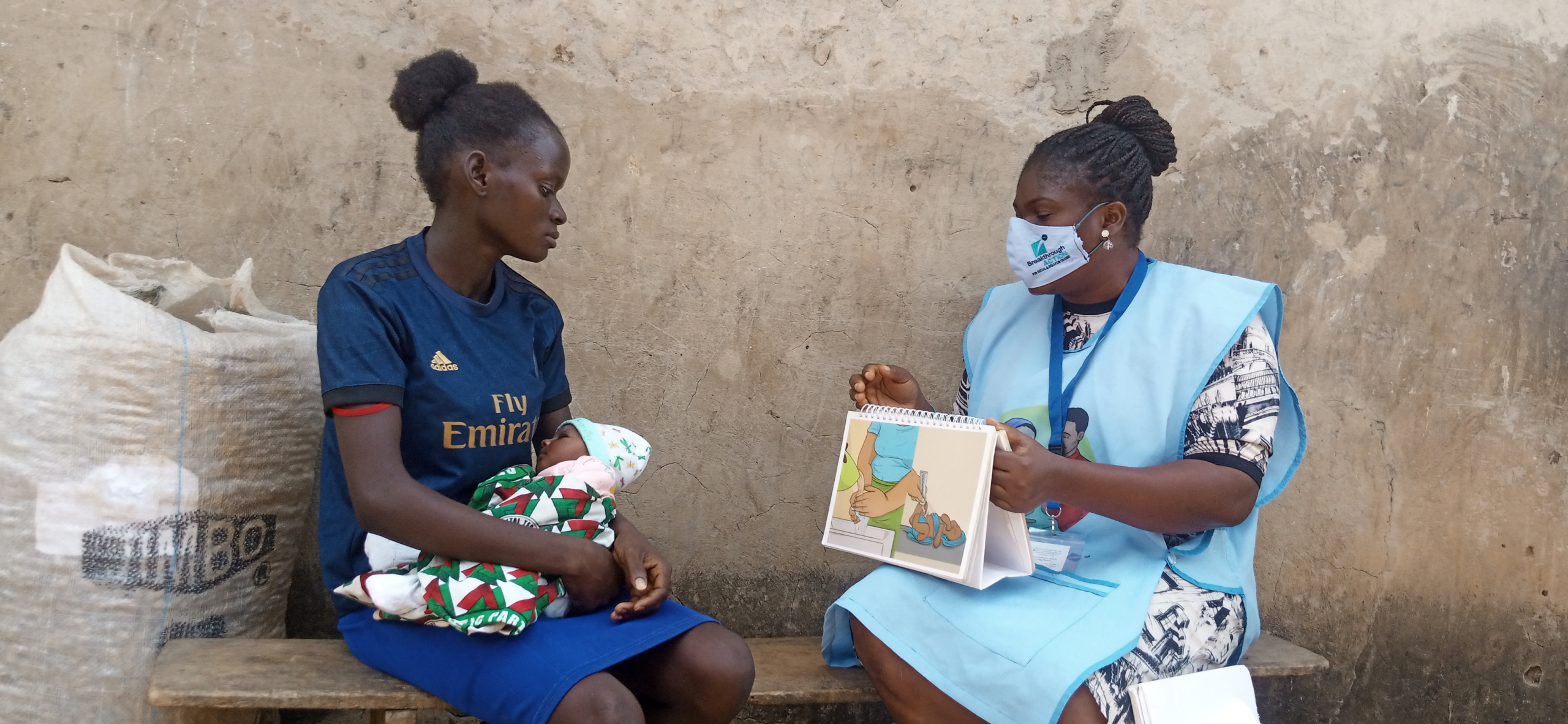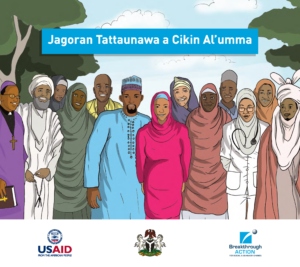
Breakthrough ACTION implements an integrated social and behavior change program that addresses priority behaviors in five states in Nigeria. Central to this program are health dialogues, compound meetings, and house-to-house visits with referrals as a call to action. Community volunteers, Ward Development Committee members, religious and traditional leaders, and other community members implement these activities.
The project produced a package of resources in English and Hausa to standardize messages about priority health behaviors related to reproductive, maternal, newborn, and child health, nutrition, COVID-19, obstetric fistula, and environmental and personal hygiene. The resources focus on lifestages and multiplier and gateway behaviors so that community members leading activities address the right behaviors with the right audience at the right time.
When developing these resources, Breakthrough ACTION considered the health areas, audience literacy levels, and geographic contexts. Social and behavior change practitioners interested in integrated programming at the community level can use the various tools.
Tools for Community Health Volunteers
Integrated Community Mobilization Flipchart
The flipchart is a guide that community health volunteers use for discussions. It addresses the following lifestages:
- Lifestages 1 and 2: Early pregnancy (first 6 months) and late pregnancy, birth, and the first few weeks after birth [ English | Hausa ]
- Lifestages 3 and 4: Families with infants and children under five years and all couples of reproductive age (not currently pregnant) [ English | Hausa ]
Gateway and Multiplier Behavior Resources
There are two resources for community dialogues:
- The Community Events Priority Behavior Picture Guide: A large visual aid used to facilitate discussions during community events [ English | Hausa ]
- The Community Events Dialogue Guide: A summary of gateway and multiplier behaviors that complements the picture guide [ English | Hausa ]
Community Health Information Booklet
The booklet highlights priority health behaviors and emphasizes the call to action for each behavior [ English | Hausa ]


